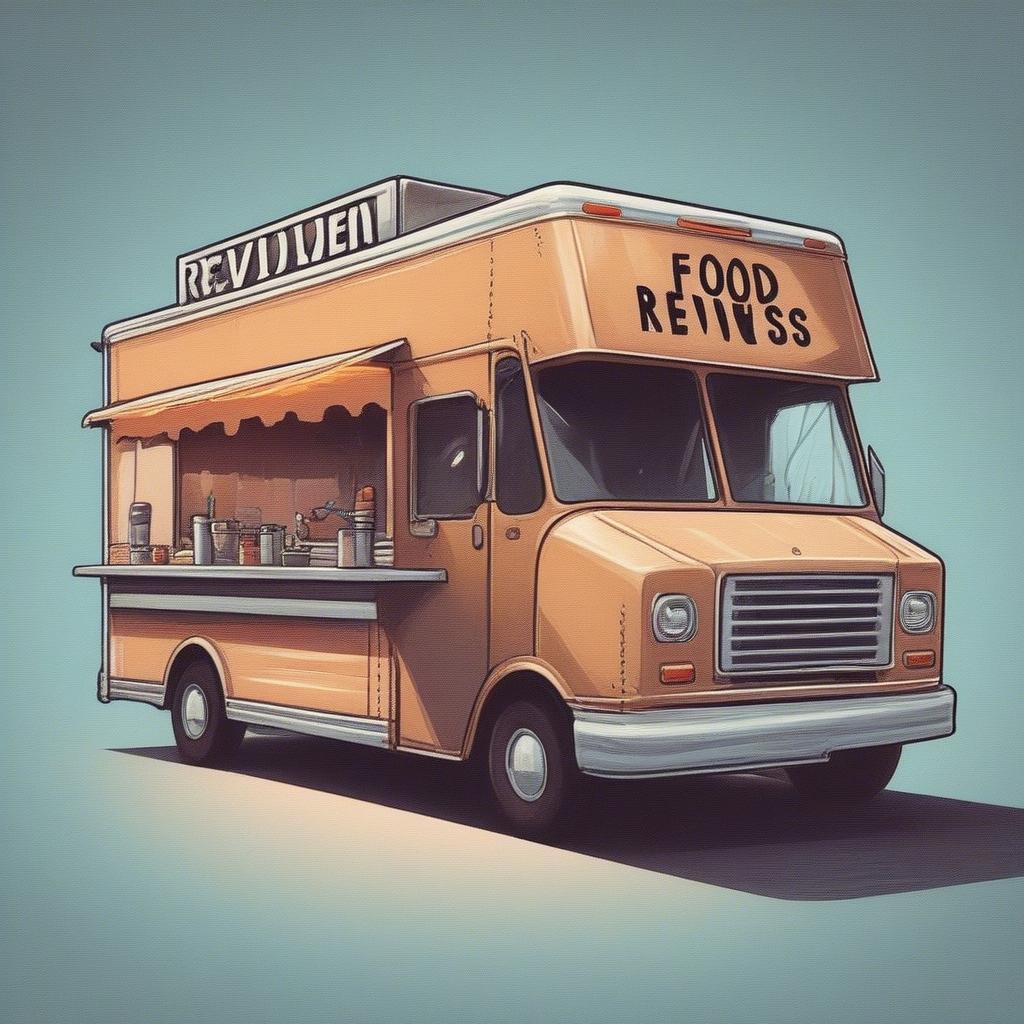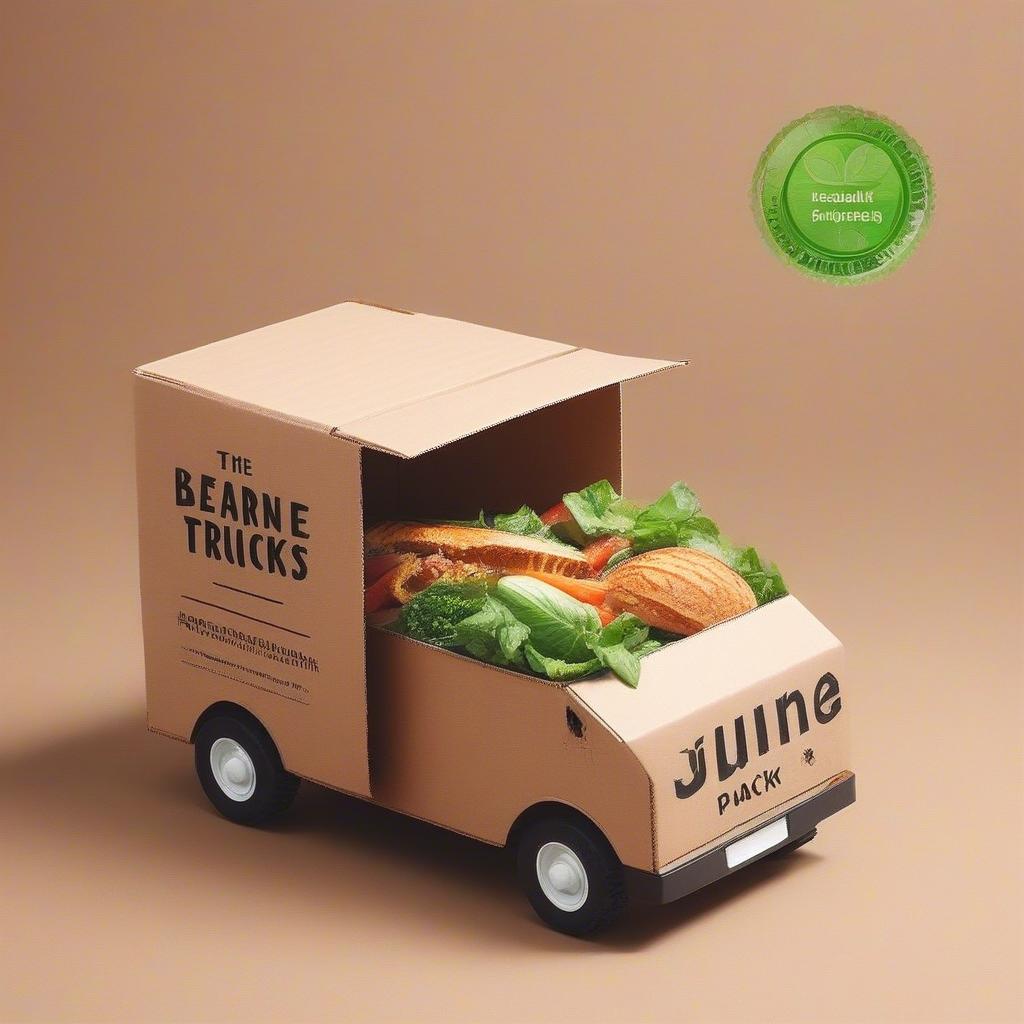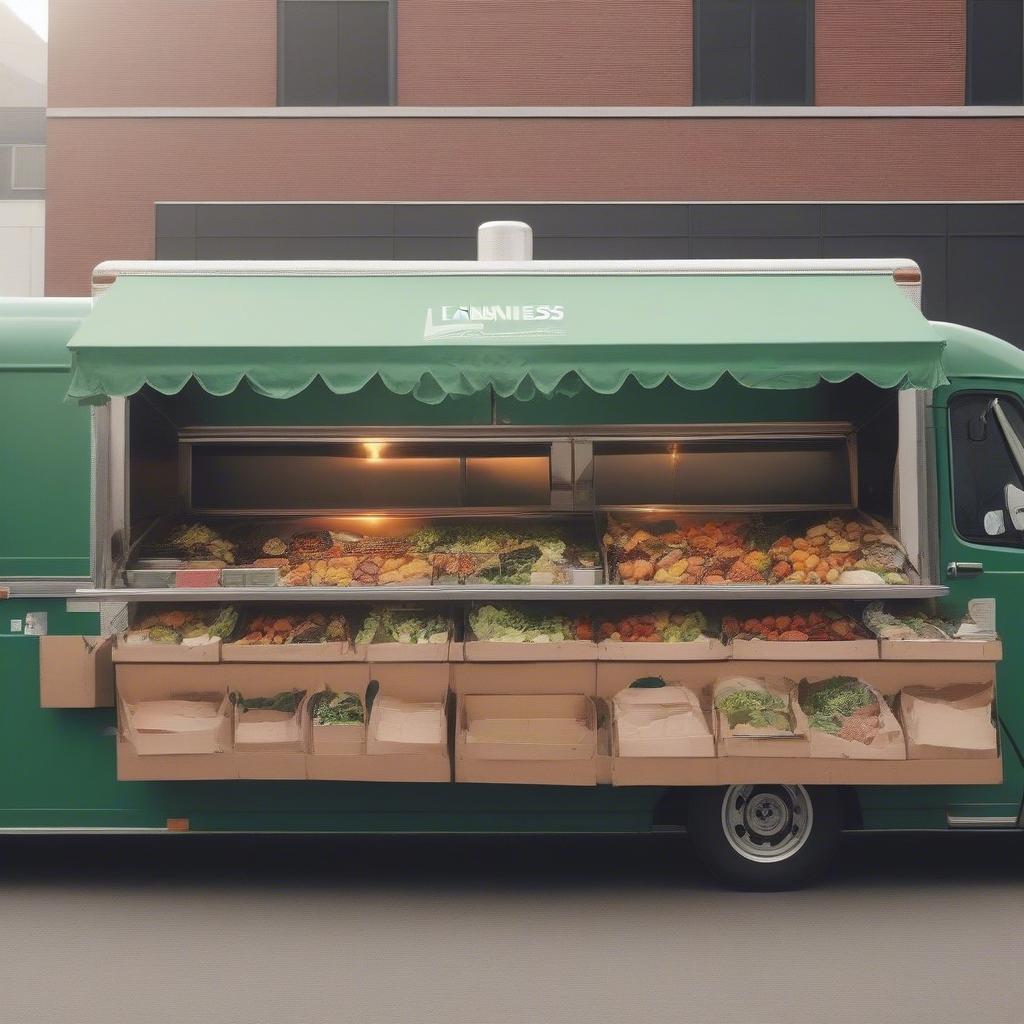
Navigating the world of food trucks is an exciting ride, full of sizzling grills and happy customers. But sometimes, the road gets bumpy. Negative reviews, like a sudden pothole, can throw you off course. Don’t panic! Every business faces them. The key is to understand how to handle negative reviews for your food truck effectively and turn those frowns upside down. This article will be your guide to mastering the art of responding to and learning from negative customer feedback.
Why Negative Reviews Matter for Your Food Truck
Before diving into strategies, let’s address why these comments matter. Ignoring negative reviews is like ignoring a leaky faucet – eventually, it will cause major damage.
The Power of Perception
- First Impressions: Potential customers often check reviews before deciding where to eat. A string of negative comments can deter them from even trying your food. Imagine someone searching “best tacos near me” and seeing a review page filled with complaints. They’ll likely scroll past your truck.
- Trust and Credibility: How you handle negative reviews shapes your business’s image. Do you respond with professionalism and empathy, or do you ignore the feedback? Responding well builds trust and shows you care about your customers’ experiences.
Unearthing Valuable Insights
- Identifying Problems: Negative reviews often point out issues you might not be aware of. Are your portions too small? Is the service too slow? Are there consistently problems with a specific dish? These reviews are a goldmine of information.
- Areas for Improvement: Don’t see criticism as just attacks. Instead, view them as opportunities to refine your menu, streamline your processes, and enhance the overall customer experience. This leads to business growth.
The Bottom Line: Sales and Growth
- Impact on Revenue: A damaged reputation from ignored or poorly handled negative reviews can directly impact sales. People are less likely to visit a food truck known for bad service or low-quality food.
- Building Loyalty: Conversely, customers who see that you genuinely value their feedback and are willing to improve are more likely to become loyal patrons. When you handle negative reviews well, you build a solid customer base.
The Negative Review Cycle: Understanding the Stages
To effectively address negative feedback, understand the stages involved in the process. Let’s break down the negative review cycle and how to engage effectively at each stage.
1. The Trigger: The Bad Experience
The negative review cycle begins with a customer having a less-than-ideal experience at your food truck. This could be anything from slow service to a cold burger or an unfriendly interaction with staff.
- What to do: While you can’t always prevent bad experiences, try to identify common causes, such as staff training gaps, inefficient processes, or ingredient quality. Train your staff to quickly address minor issues before they become negative reviews.
2. The Review: The Customer Speaks
The disgruntled customer then expresses their dissatisfaction through a review, often on platforms like Google, Yelp, or social media.
- What to do: This is your opportunity to understand where things went wrong. Avoid deleting reviews; it’s essential to have these insights. Be aware of where your customers leave reviews.
3. The Response: Your Action Counts
This is where you come in! Your response to the negative review is critical and will have the most impact on your reputation.
- What to do: Acknowledge the feedback, apologize, and propose a solution if necessary. Always respond within 24-48 hours.
4. The Aftermath: Learning and Improving
This is the critical phase after you’ve engaged with the customer. This involves using the review to improve your food truck and prevent future negative reviews.
- What to do: Reflect on the root cause of the issue, implement changes, and communicate these improvements to your customers.
5 Steps to Handle Negative Reviews for Your Food Truck
Here are five actionable steps to handle negative reviews for your food truck and turn a negative situation into a positive learning opportunity.
Step 1: Monitor Your Online Presence
You can’t fix what you don’t know about. Start by knowing where people are talking about you.
- Set Up Alerts: Use Google Alerts to notify you whenever your food truck name is mentioned online.
- Check Review Platforms Regularly: Regularly visit platforms like Google Reviews, Yelp, Facebook, and Instagram.
- Social Listening: Use social media search tools to look for mentions of your brand, even if you aren’t tagged.
- Assign a Team Member: Assign someone on your team to actively monitor and respond to reviews. It might be you initially, but eventually, you’ll want to delegate this.
Step 2: Respond Professionally and Promptly
Your response matters more than you might think! Here’s how to craft a response that shows you care.
- Aim for Speed: Respond within 24-48 hours. The longer you wait, the angrier the customer might become.
- Acknowledge the Feedback: Start by acknowledging the customer’s experience. For example, “I’m sorry to hear you had a bad experience.”
- Empathize and Apologize: Express empathy and apologize sincerely. Say something like, “We understand your frustration,” or “We apologize that your meal was not up to par.”
- Take Responsibility: Don’t make excuses. Instead, acknowledge where your food truck fell short.
- Keep it Professional: Even if the review is rude or unfair, maintain a professional tone in your response.
- Avoid Arguing: Never argue or become defensive with the reviewer. This will only make things worse.
- Offer a Solution: If appropriate, offer a solution, such as a refund or a free meal. For example, “Please reach out to us directly at [email protected] so we can offer you a refund.”
- Keep it Public (Initially): Respond publicly on the review platform. This shows others you are engaged and willing to fix issues.
- Take it Offline: If the issue requires a deeper conversation, take the interaction offline by providing a phone number or email to continue the conversation.
- End Positively: Thank the customer for their feedback, even if it was negative. For example, “We appreciate your feedback as it helps us improve.”
Example of a Good Response:
“Dear [Reviewer’s Name], I am so sorry to hear that your experience at our food truck was not enjoyable. We sincerely apologize that your taco was cold. That is not the quality of food we strive for. We’d like the opportunity to make it right. Could you please email us at [email protected] so we can discuss further? We value your feedback and hope to earn your business again.”
Step 3: Analyze and Learn from the Feedback
Don’t just respond and forget. Dig deep and learn from the experience!
- Identify Recurring Issues: Look for patterns in negative reviews. Are multiple customers complaining about slow service or a specific dish?
- Track Feedback Trends: Keep a record of the negative reviews. Note what is being said and if the same issues keep coming up.
- Get Feedback From Your Team: Talk to your staff. They might have insights into why customers are unhappy.
- Be Open to Change: Be willing to make changes based on the feedback you receive. Don’t be afraid to tweak your menu, revise your processes, or retrain your staff.
- Prioritize Areas for Improvement: Focus on the issues that are most frequently mentioned in negative reviews or that have the biggest impact on the customer experience.
Step 4: Implement Necessary Changes
Learning without taking action is pointless. It’s time to implement changes!
- Menu Adjustments: If customers are frequently complaining about a specific dish, consider removing it or revising the recipe.
- Process Improvements: If slow service is an issue, optimize your processes. This might involve adding additional staff, streamlining food prep, or using a better POS system.
- Staff Training: If the complaints are about staff behavior, provide additional training. Focus on communication skills and customer service.
- Ingredient Quality: If complaints are about food quality, look at using better ingredients from different suppliers.
- Communicate with Customers: Once you have made changes, communicate them to your customers via social media or email.
Step 5: Encourage Positive Reviews
The best defense against negative reviews is a strong offense of positive feedback.
- Make it Easy to Leave Reviews: Provide clear instructions on how and where customers can leave a review.
- Ask for Reviews: At the end of each transaction, politely ask satisfied customers to leave a review.
- Use Signage: Place signs at your truck prompting customers to leave reviews on your preferred platform.
- Follow-Up Emails: Send follow-up emails after transactions thanking customers for their business and asking for feedback.
- Offer Incentives (Carefully): Some platforms prohibit this, but you can subtly incentivize reviews, perhaps by doing small drawings for those who post on social media. Avoid incentivizing only positive reviews; it must be for all reviews.
- Engage with Positive Feedback: Thank customers who leave positive reviews. This shows appreciation and encourages continued engagement.
Food Truck Tips: Preventing Negative Reviews
While handling negative feedback is crucial, preventing it in the first place is even better. Here are some practical tips for your food truck.
Menu Management
- Keep it Simple: Focus on a few dishes that you can execute exceptionally well rather than a large menu with a lot of mediocre dishes.
- Fresh Ingredients: Prioritize high-quality, fresh ingredients. This can make a significant difference in taste.
- Consistent Recipes: Establish standard recipes to ensure consistency. Customers expect the same taste every time.
- Accurate Descriptions: Make sure your menu descriptions are accurate and clear to avoid disappointment.
Staff Training
- Customer Service Skills: Train your staff on the importance of good customer service, including communication and problem-solving skills.
- Food Handling Safety: Ensure that your staff are trained in proper food handling and preparation procedures to avoid food safety issues.
- Product Knowledge: Your staff should be well-versed in your menu and able to answer customer questions.
- Empathy Training: Teach your staff to recognize when a customer is unhappy and how to handle it with empathy and professionalism.
Efficient Operations
- Fast Service: Optimize your workflows to ensure fast and efficient service. Time is crucial for customers at a food truck.
- Cleanliness: Maintain a clean and organized food truck. This includes keeping the truck clean and disposing of trash promptly.
- Order Accuracy: Implement processes to ensure order accuracy. Errors can lead to negative feedback.
- Effective Point-of-Sale (POS): Use a POS system that helps you keep track of orders and make the checkout process smooth and accurate.
Customer Communication
- Clear Expectations: Be clear about wait times and any other potential issues to avoid surprises.
- Active Listening: Encourage your staff to actively listen to customer concerns and try to resolve them on the spot.
- Be Transparent: If there is a problem with an order or delay, communicate it to the customer.
- Engage on Social Media: Use social media to interact with your customers, answer questions, and build relationships.
Learn Business: Your Partner in Food Truck Success
At Learn Business, we understand the unique challenges food truck owners face. Beyond delicious food, your success hinges on strategic business management. We’re here to support you every step of the way with guidance and resources tailored to your specific needs.
How Learn Business Supports Your Food Truck:
- Tailored Templates: Access a wide range of templates designed for food truck businesses. These include menu templates, financial trackers, checklists, marketing calendars, and customer feedback forms. These documents are built to help you organize and streamline your operations effectively.
- Expert Advice: Get expert insights and guidance on business management, marketing, customer service, and more. Our team understands the food truck industry and will help you navigate potential challenges.
- Customer Feedback System: We offer tools that help you to implement a customer feedback system, both at your truck and online. Knowing what customers think and how to resolve it is critical to success.
- Process Improvement Strategies: Get help identifying inefficiencies and creating processes that optimize operations.
- Resource Library: Gain access to resources like articles, checklists, and tutorials to enhance your business knowledge and management skills.
- Community Support: Connect with a community of fellow food truck owners for networking, collaboration, and peer-to-peer learning.
Learn Business provides the tools and resources you need to not just survive but thrive in the competitive food truck industry. Our materials are carefully designed to save you time and money, and make handling your business processes simpler and more efficient. This means less stress and more time focusing on what you love – creating amazing food.
How Learn Business Helps You Handle Negative Reviews:
- Response Templates: Access proven templates for responding to different types of negative reviews.
- Review Tracking System: Learn how to efficiently track and analyze reviews to identify trends and areas for improvement.
- Conflict Resolution Guides: Get access to strategies for handling difficult customer interactions.
- Customer Service Training: Improve the customer service skills of your staff with our training materials.
Conclusion
Handling negative reviews for your food truck doesn’t have to be a daunting task. By following these actionable steps, you can turn negative feedback into opportunities for growth. Remember to be prompt, professional, and empathetic in your responses. Analyze the feedback, implement necessary changes, and always strive to enhance the customer experience. By also ensuring you are actively seeking positive reviews and using the right customer feedback tools you can be on the path to a successful business. With Learn Business as your partner, you’ll have the tools and support you need to manage your business effectively and build a thriving food truck.



Leave a Reply